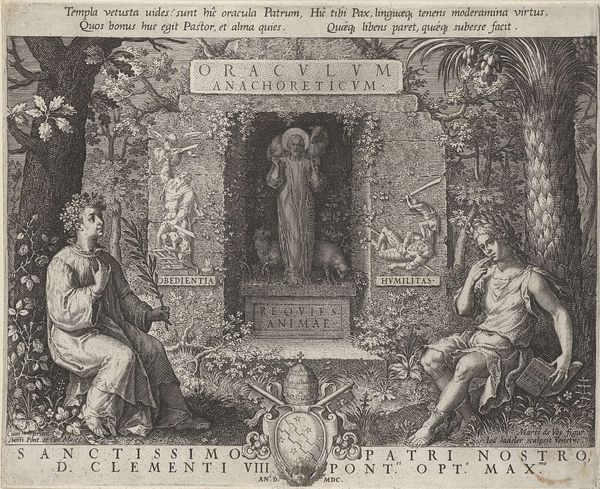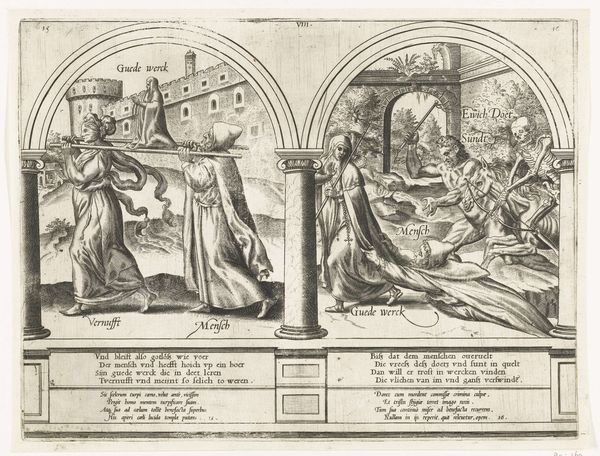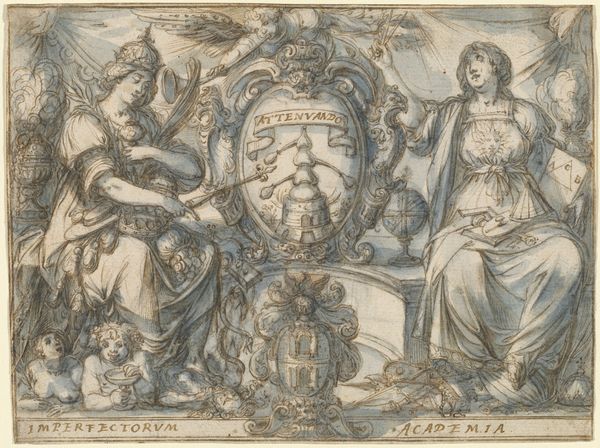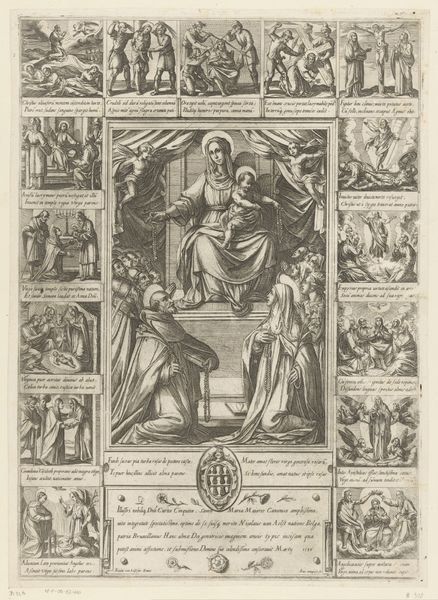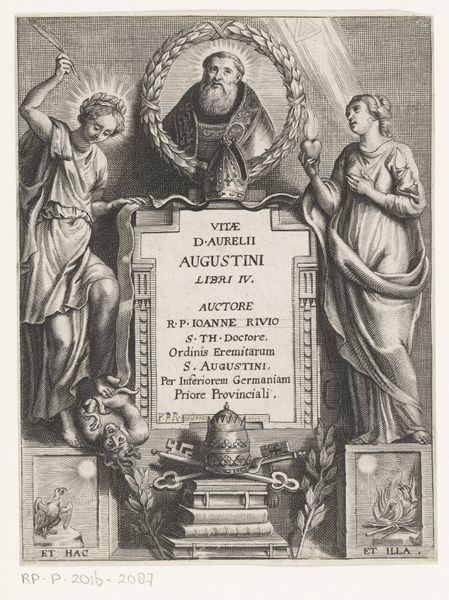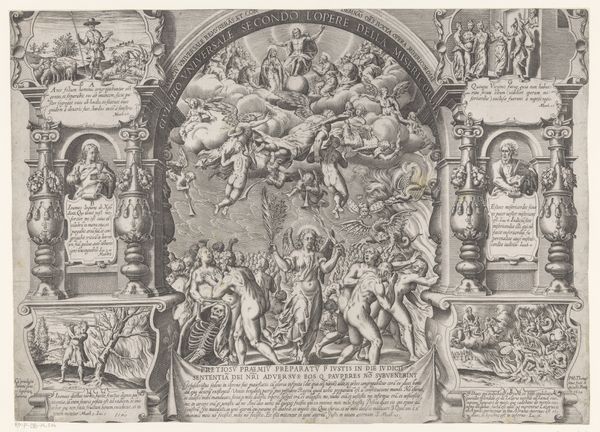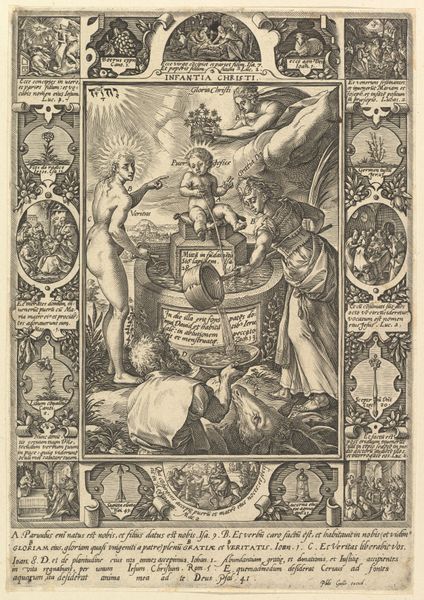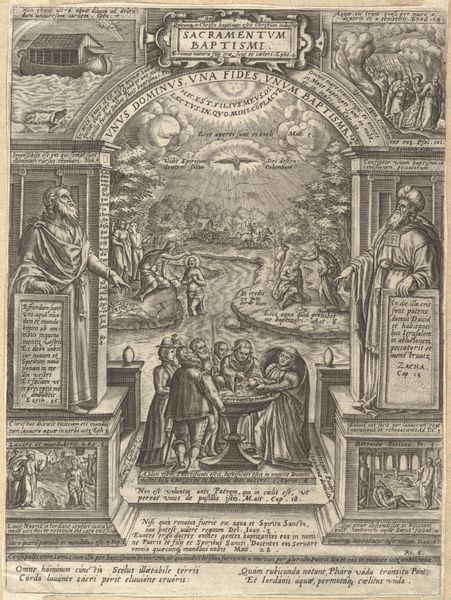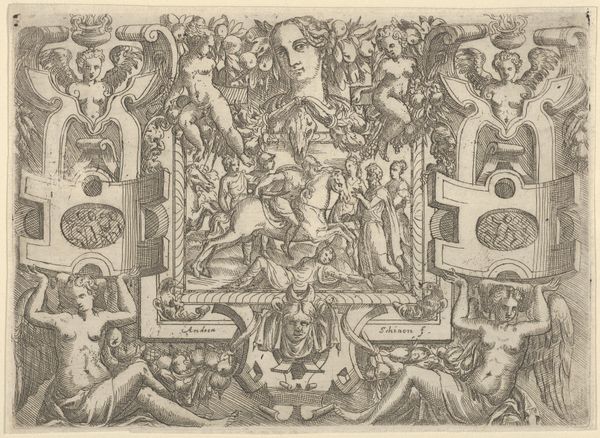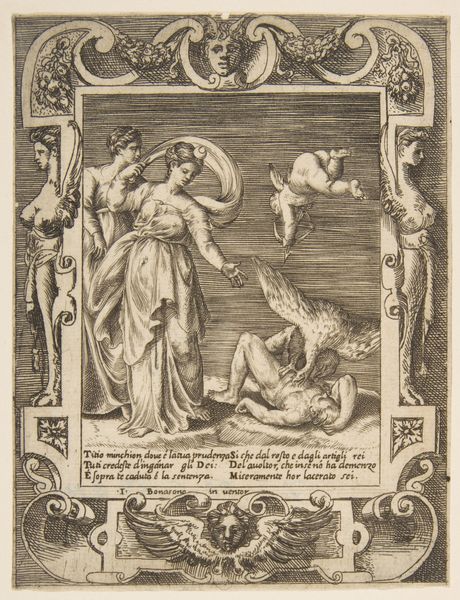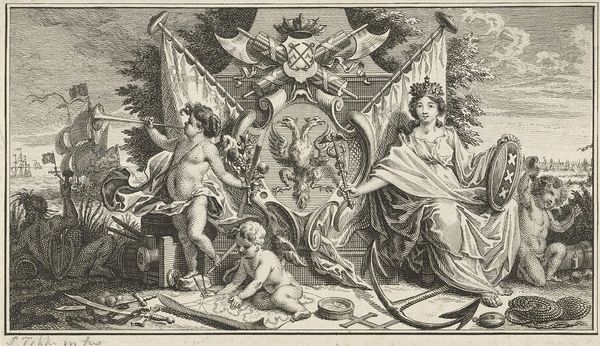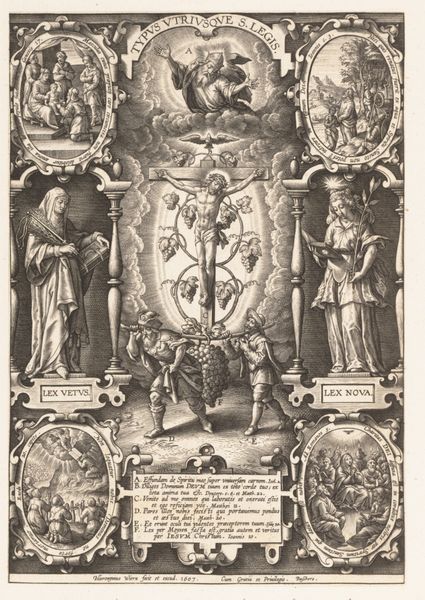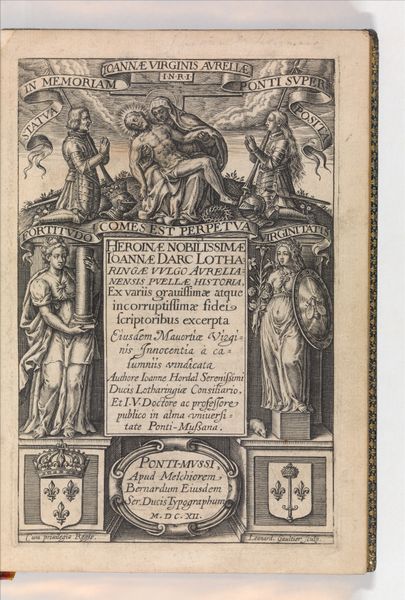
drawing, print, ink, engraving
#
drawing
#
allegory
#
pen drawing
# print
#
pen illustration
#
pen sketch
#
figuration
#
ink line art
#
11_renaissance
#
ink
#
pen-ink sketch
#
pen work
#
history-painting
#
northern-renaissance
#
engraving
Dimensions: height 385 mm, width 487 mm
Copyright: Rijks Museum: Open Domain
Editor: This print, "Minerva en Grammatica," made between 1563 and 1573 by Marin Bonnemer, presents a stark contrast between the two allegorical figures. It feels very balanced, but also quite rigid. What stands out to you when you look at this? Curator: The fascinating thing to me is the way Bonnemer visually connects and separates these two figures, Minerva, the Roman goddess of wisdom and strategic warfare and Grammatica or Grammar. It’s a dichotomy but a cohesive unit, too. Editor: What do you mean by dichotomy? Curator: Well, consider Minerva's symbols – the shield, the owl, emblems of wisdom, protection and strategy – placed against Grammatica, holding the very building blocks of language, an alphabet and what seems to be stalks of grain. Minerva embodies learned knowledge, whereas Grammatica seems to embody cultivation and order. Notice, both figures frame scenes of chaotic activity. Could these activities be an expression of the need for restraint? Editor: So you see a narrative being presented here? A commentary on learning itself, perhaps? Curator: Exactly. Learning isn’t merely accumulating knowledge as personified by Minerva; it requires a structured approach, a foundational understanding represented by Grammatica. Where do you think Bonnemer is leading us? Is it about the dual importance of theory versus practice, or is there something deeper? Editor: I hadn't thought of the relationship between order and wisdom like that. Now it feels like I'm only just scratching the surface! Curator: It's like the print itself invites us to study it more deeply and with great interest.
Comments
No comments
Be the first to comment and join the conversation on the ultimate creative platform.
